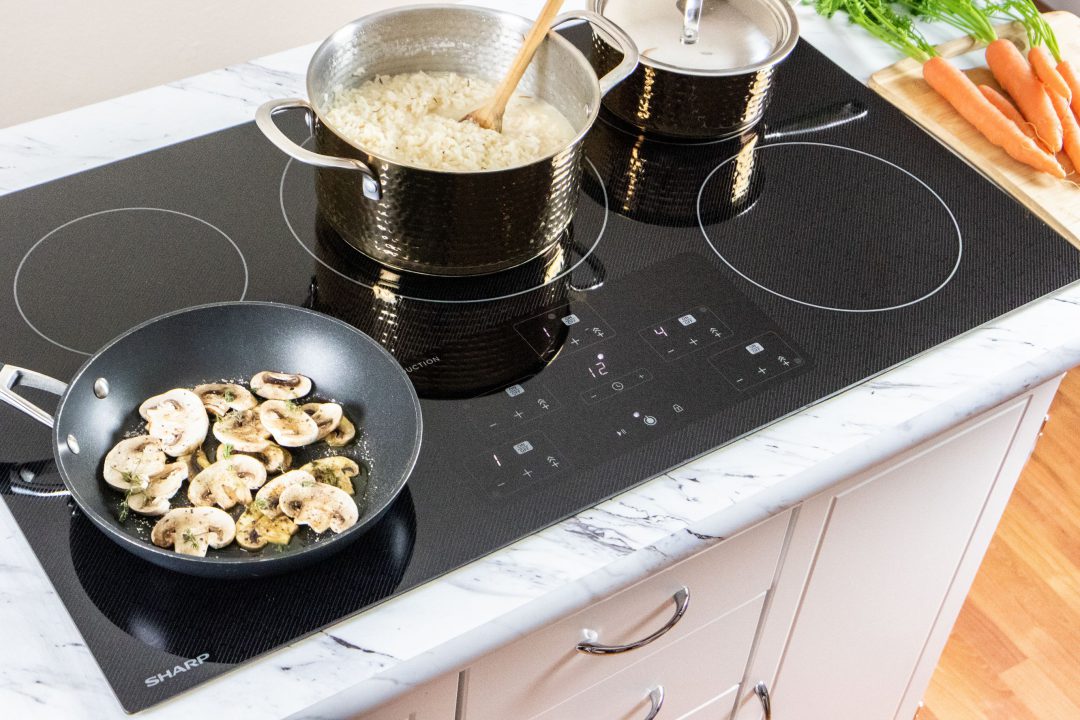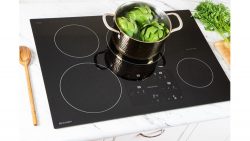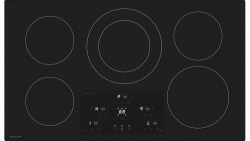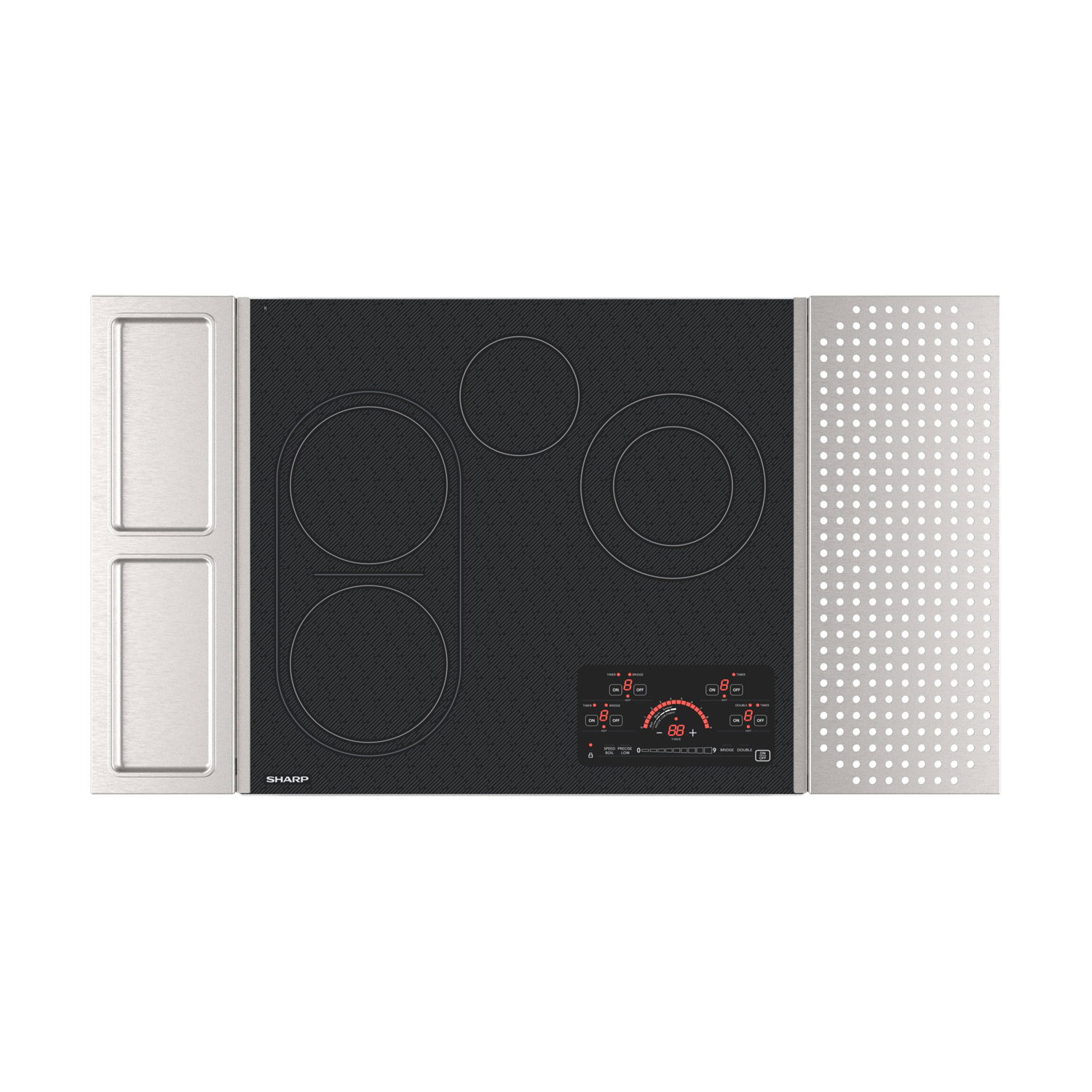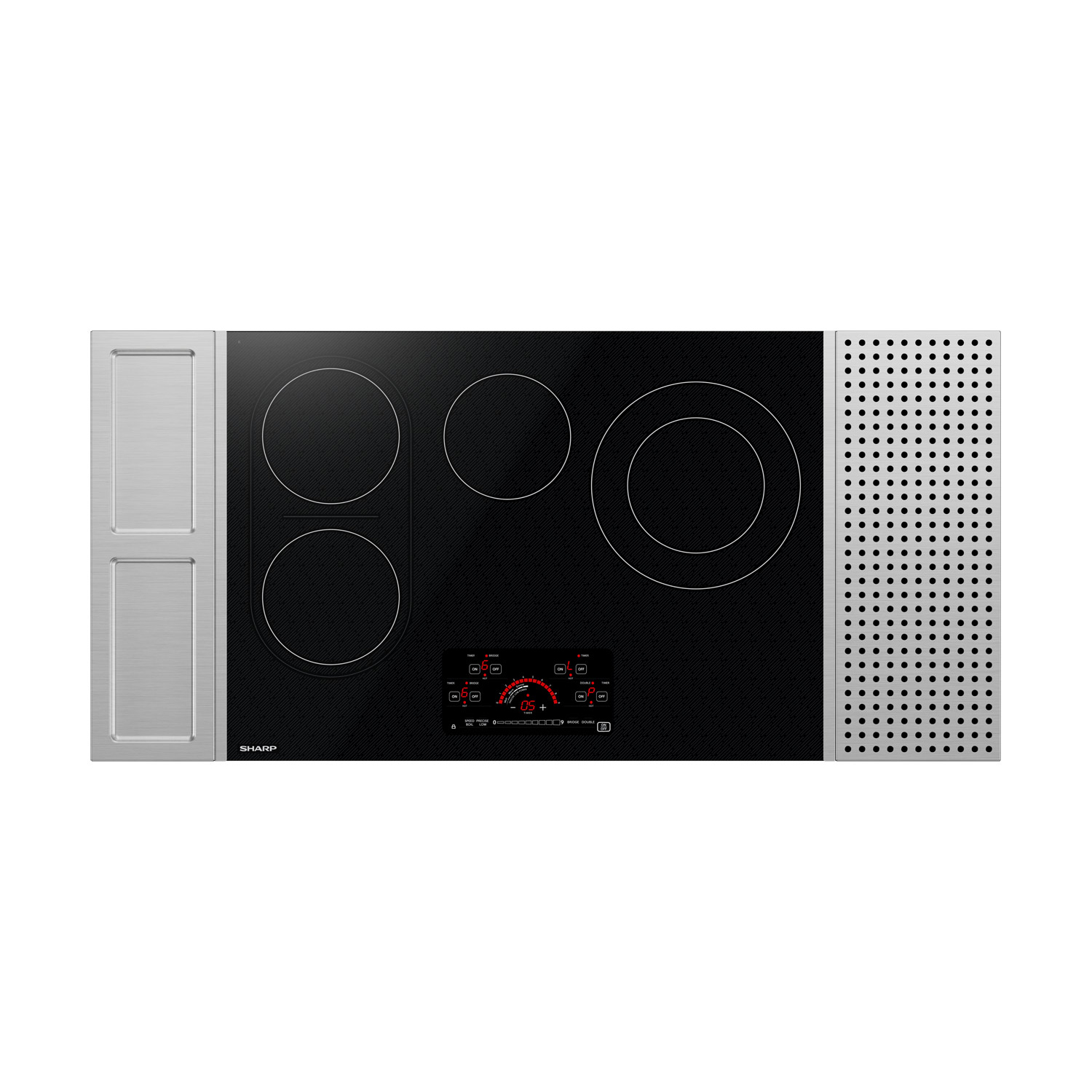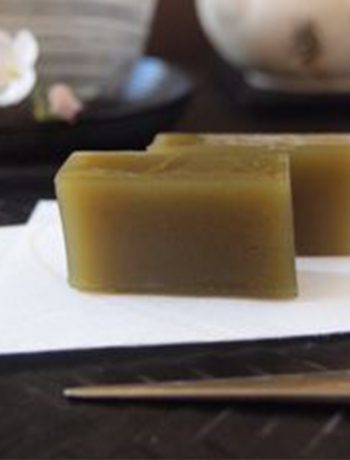Your kitchen is the hub of your home life and a source of pride. If you are currently planning to remodel your kitchen, the planning stage should be more time consuming than the actual construction. After all, you are creating a masterpiece in your home. No pressure, though, okay?
Far too often, my friends and family tell me that they choose appliances to incorporate into their kitchen remodel based solely on price. Often, they do not take the time to investigate each appliance to discover the best option for their home. Unfortunately, these types of decisions often result in their justification for another remodel only a few years later.

Also, consider appliances as individuals. It may be more convenient to order an entire kitchen from one brand, but is it the best decision for you? A lackluster over-the-range microwave oven in a kitchen suite is a good example. Perhaps a more attractive chimney-style hood and a Sharp Microwave Drawer would serve you better? Consider the cooktop. Smooth electric and induction cooktops are basically “sheets of black glass” regardless of the brand. Choose your cooking technology, and then make the most economical choice – they all match.
If you start with an in-depth plan of action, you may be able to control the “construction disruption.” You may be more likely to stay on budget and choose appliances that will be more beneficial for the long haul.
We can certainly assist you in assuring this next renovation will last! Are you unsure of which cooktop would be best for your home? Do not worry! You can learn more about the differences between induction, gas, and electric cooktops in the information provided below.
Induction Cooktops vs. Gas Cooktops
Gas or Induction? “Well, which one is better?” is a fair question to ask your sales representative. Hopefully, the salesperson can give you enough information to make an informed decision. However, it can be complicated. There are several differences between the cooking experience on gas vs. induction cooktop that should be accounted for before making your choice.
A major difference between a gas cooktop and an induction cooktop is that induction is significantly more efficient than gas. How is this possible? The short answer is that food is cooked with induction will receive 90% of the heat generated instead of only 40-55% for gas. Now that is a significant difference to me, personally.
This will keep your kitchen much cooler and more comfortable for your friends and family while you prepare those tasty meals.

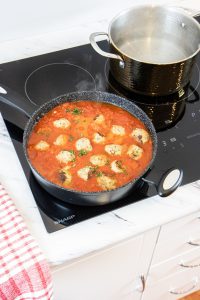
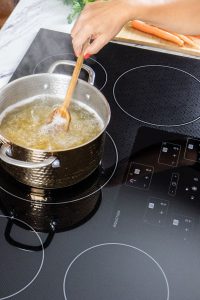
When you are cooking with an induction cooktop, like the Sharp 30” Width Induction Cooktop, European Black Mirror Finish made with Premium Schott ®Glass; you also decrease the risk of incurring burns or accidental fires, as there is no open flame.
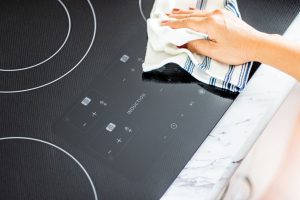
Speaking of safety, with the Sharp induction cooktop, your cookware must be present for a cooking zone to turn on, so you won’t accidentally turn it on or leave it on after you remove the pan. I know that this was a huge selling point for me because, while I am cooking, I have a million thoughts running through my mind, and I used to remove the pan with the flame still running on high.
Also, all cooking zones countdown and turn themselves off after 120 minutes, thankfully making kitchen mishaps less likely. I am so grateful to have innovations like these in my kitchen!
Induction Cooktops vs. Electric Cooktops
Regarding the differences between an electric cooktop and an induction cooktop, an induction cooktop provides more direct control over the heat level than the electric one. This means that when a pan is being used for induction cooking, its temperature changes the moment the current is adjusted.
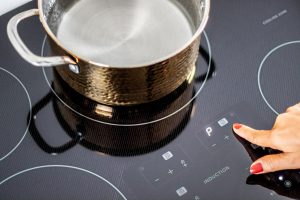
This is not the case for electric, as it takes time for the pan to catch up with the heat source’s temperature. When I was in college, this was quite the predicament for my roommates and me. Like I said earlier, I have a terrible tendency to walk away with a finished pan full of food without turning off my cooktop. Needless to say, we had an agreement that the electric cooktop we owned had to be unplugged before anyone could touch it to assure all hands and arms remained safe.
While electric is more energy-efficient than gas, induction is still the clear winner for efficiency. Stovetop or cooktop electric cooking allows only 65-70% of the heat to reach food instead of induction’s 90%. This can result in your kitchen staying much cooler with induction cooking than it does with electric cooking. With the summer quickly approaching, this is a major element to consider.
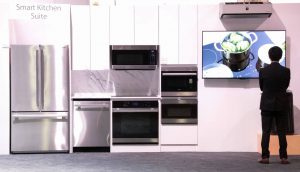
There is no denying that fire risk is lower when cooking with an electric cooktop than with a gas cooktop. The risk is lower significantly when cooking with an induction cooktop since the pan itself is the only heat source in induction cooking.
A kitchen is made up of more than just a stunning backsplash and gorgeous cabinets. Your choice of appliances is an important one. Make sure to consider safety and design when choosing the perfect cooktop for you and your family. Share your kitchen renovation stories with us on social media by tagging @SharpHomeUSA!

